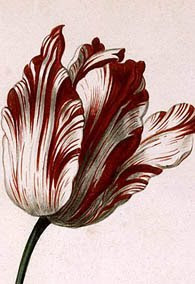
Wouldn't it be wonderful, if everyone who wanted one had a perfect plot for vegetable growing? However as with many things in life perfection is usually out of reach, and unfortunately gardening is no different.
Most people’s image of a vegetable garden is one that receives direct sun all day, and that’s fantastic for growing the old favourites such as tomatoes, peppers, and melons. But what are you supposed to grow if you have no other choice than to grow in the shade?
Well you may be surprised to learn that there are plenty of varieties that will not only tolerate these lower light levels, but will in fact prefer them and positively thrive.
There are of course some benefits to growing in the shade because you won't need to water as often and crops that are quick to bolt in hot weather, such as lettuces and spinach, and will have a far longer harvesting period.
A good rule to remember is that if you are growing crops for the fruit or edible roots, then you are best suited with a sunny position. If you are growing crops for the leaves, stems, or buds, then a certain amount of shade will actually improve the crop. Remember though, that no crop is going to do particularly well in heavy shade. As with all plants they will need a minimum level of light to survive and grow.
Below are groups of the best fruits and nuts for growing in the shade:
 Woodland crops such as raspberries, blackberries and gooseberries will usually do well but also consider their modern hybrids such as Tayberries and Boysenberries.
Woodland crops such as raspberries, blackberries and gooseberries will usually do well but also consider their modern hybrids such as Tayberries and Boysenberries.The same will apply to Rhubarb and Blueberries.
Nut trees such as the filbert, and hazelnut will also be able to produce a good crop in the shade but they will need to be in a position where they will receive sun in the morning
If your shade is caused by overhanging trees then you can try and improve the growing conditions. Light levels can be increased by careful pruning, and the soil will probably also need to be improved as tree roots will remove a lot of the available nutrients and water.
Take advantage of warmer and hopefully brighter conditions at home by germinating seeds earlier on in the year using modules. This will get them off to a far quicker start and will also help to establish their root systems before they are planted into the ground.
For related articles click to the following links:
CLIMBING PLANTS FOR SHADED WALLS AND FENCES
EVERGREENS FOR DRY SHADE
Grow Fruit and Nuts in the Home Garden in Temperate Areas
PLANTS FOR DRY SHADEIf your shade is caused by overhanging trees then you can try and improve the growing conditions. Light levels can be increased by careful pruning, and the soil will probably also need to be improved as tree roots will remove a lot of the available nutrients and water.
Take advantage of warmer and hopefully brighter conditions at home by germinating seeds earlier on in the year using modules. This will get them off to a far quicker start and will also help to establish their root systems before they are planted into the ground.
For related articles click to the following links:
CLIMBING PLANTS FOR SHADED WALLS AND FENCES
EVERGREENS FOR DRY SHADE
Grow Fruit and Nuts in the Home Garden in Temperate Areas













































